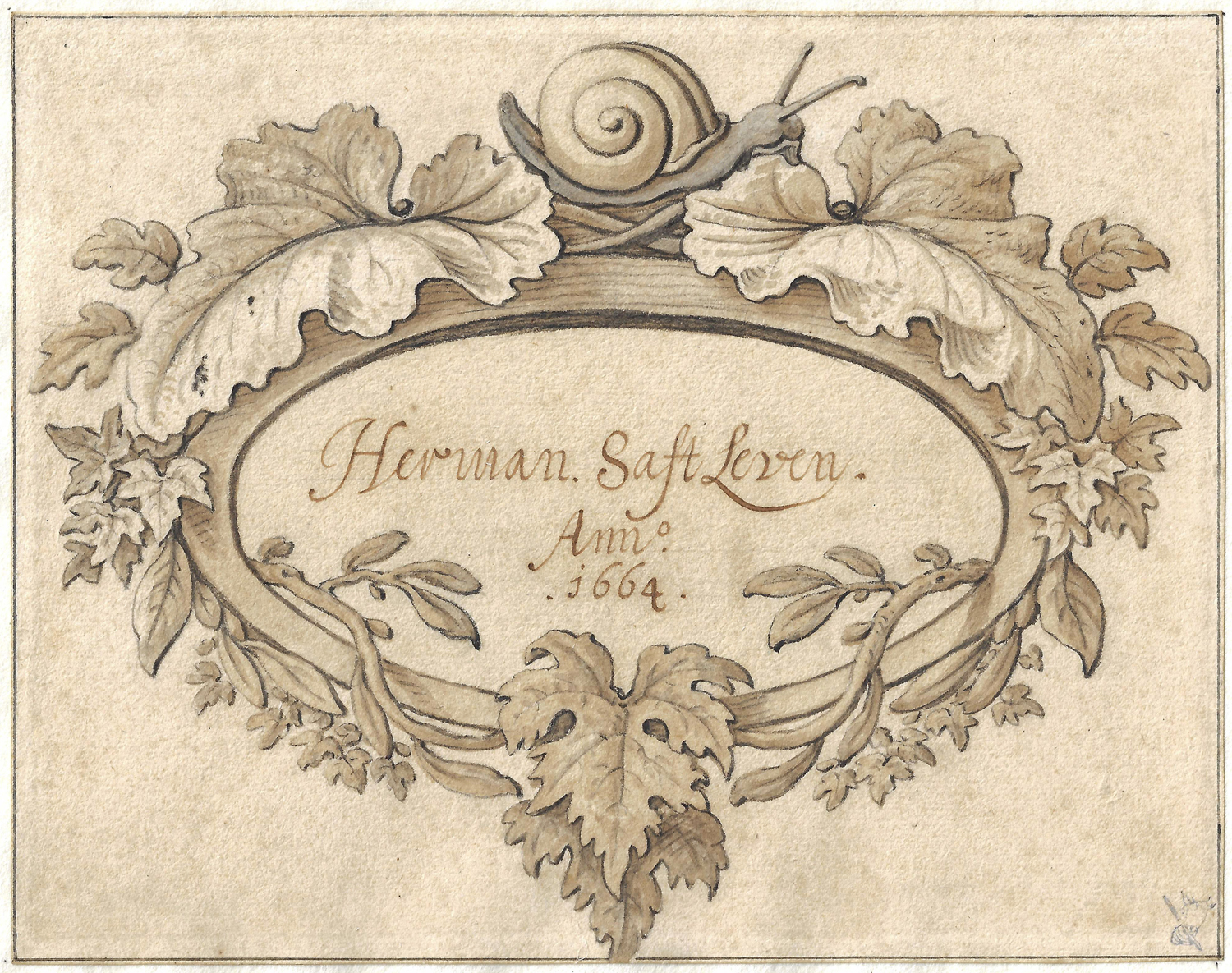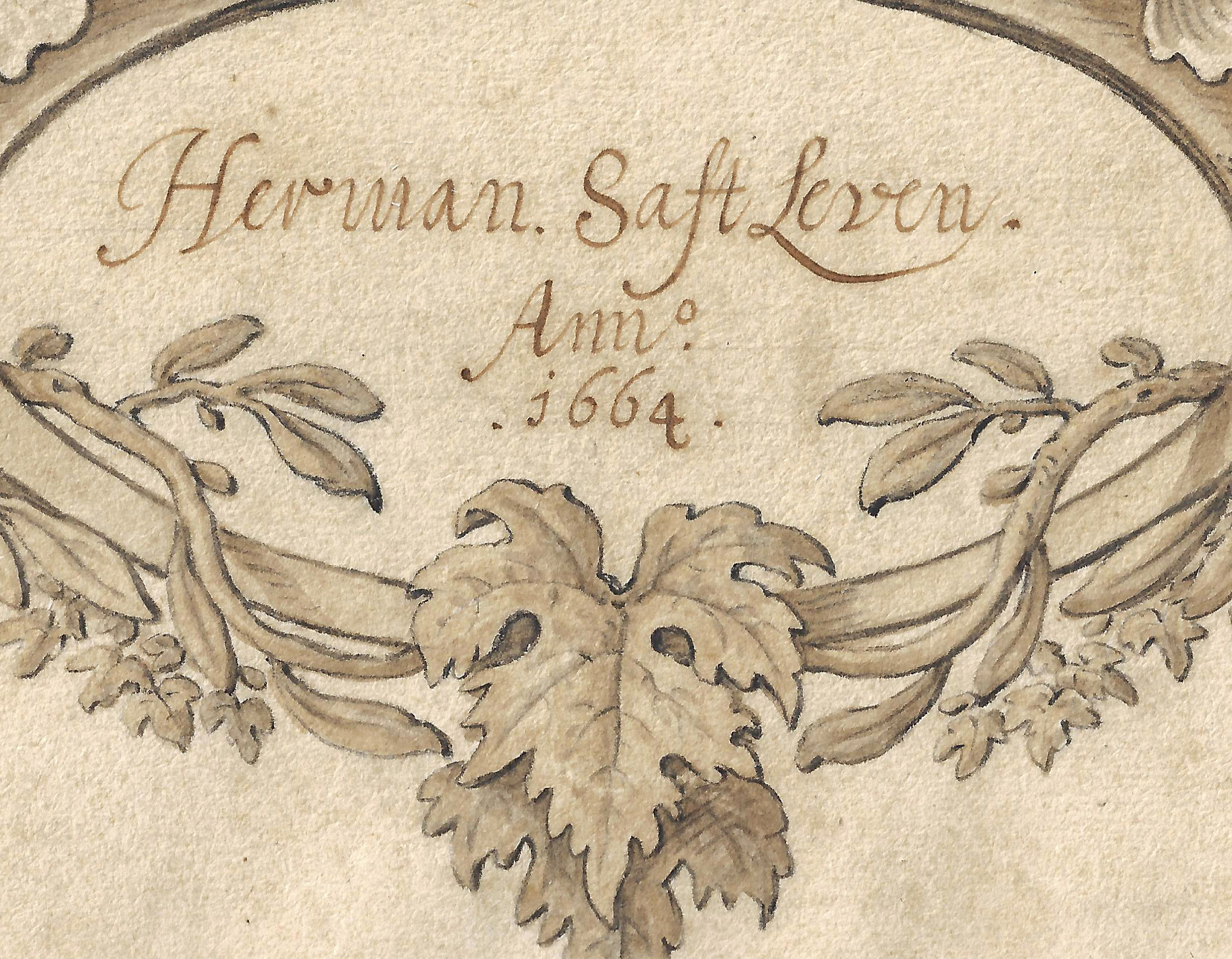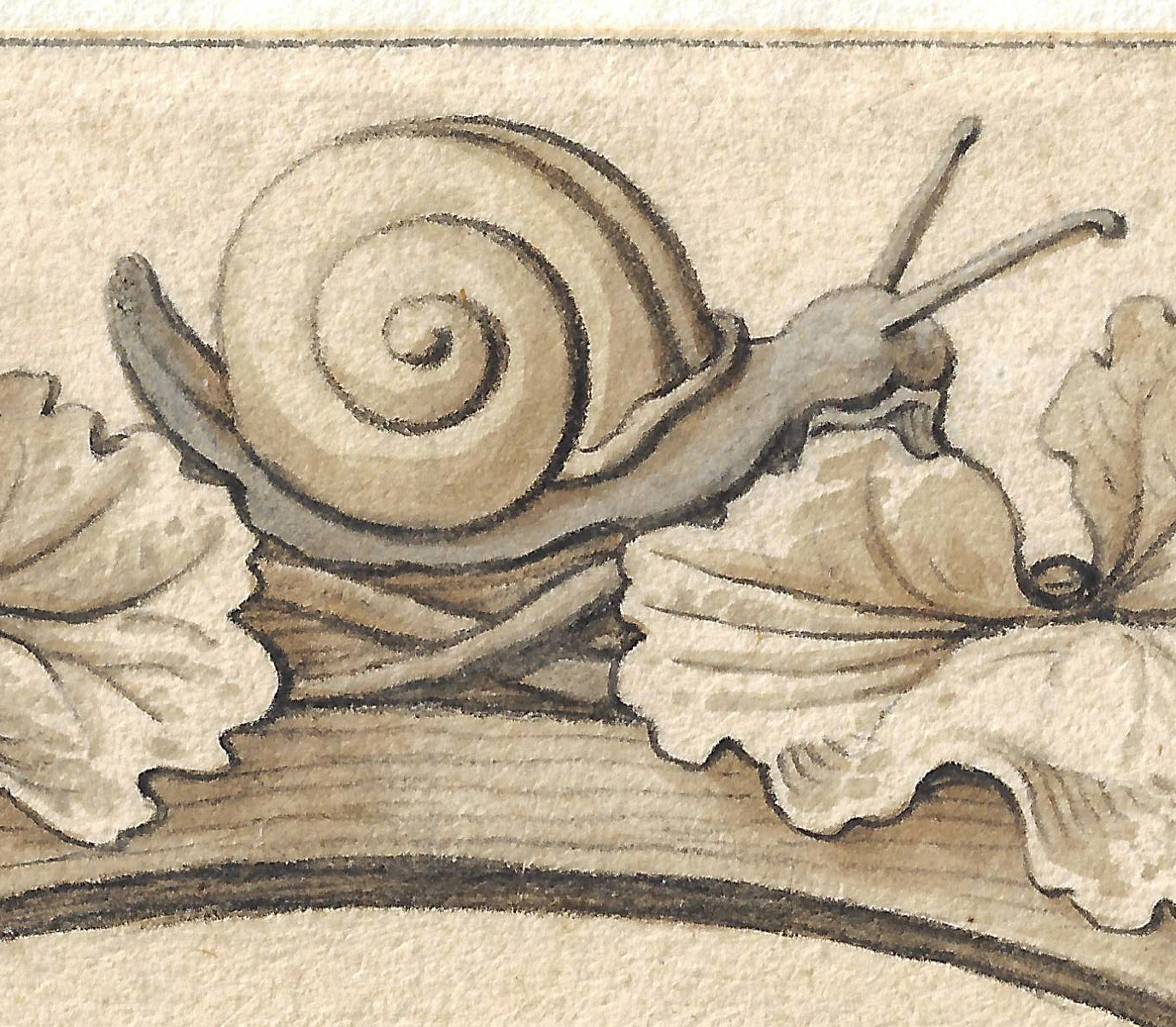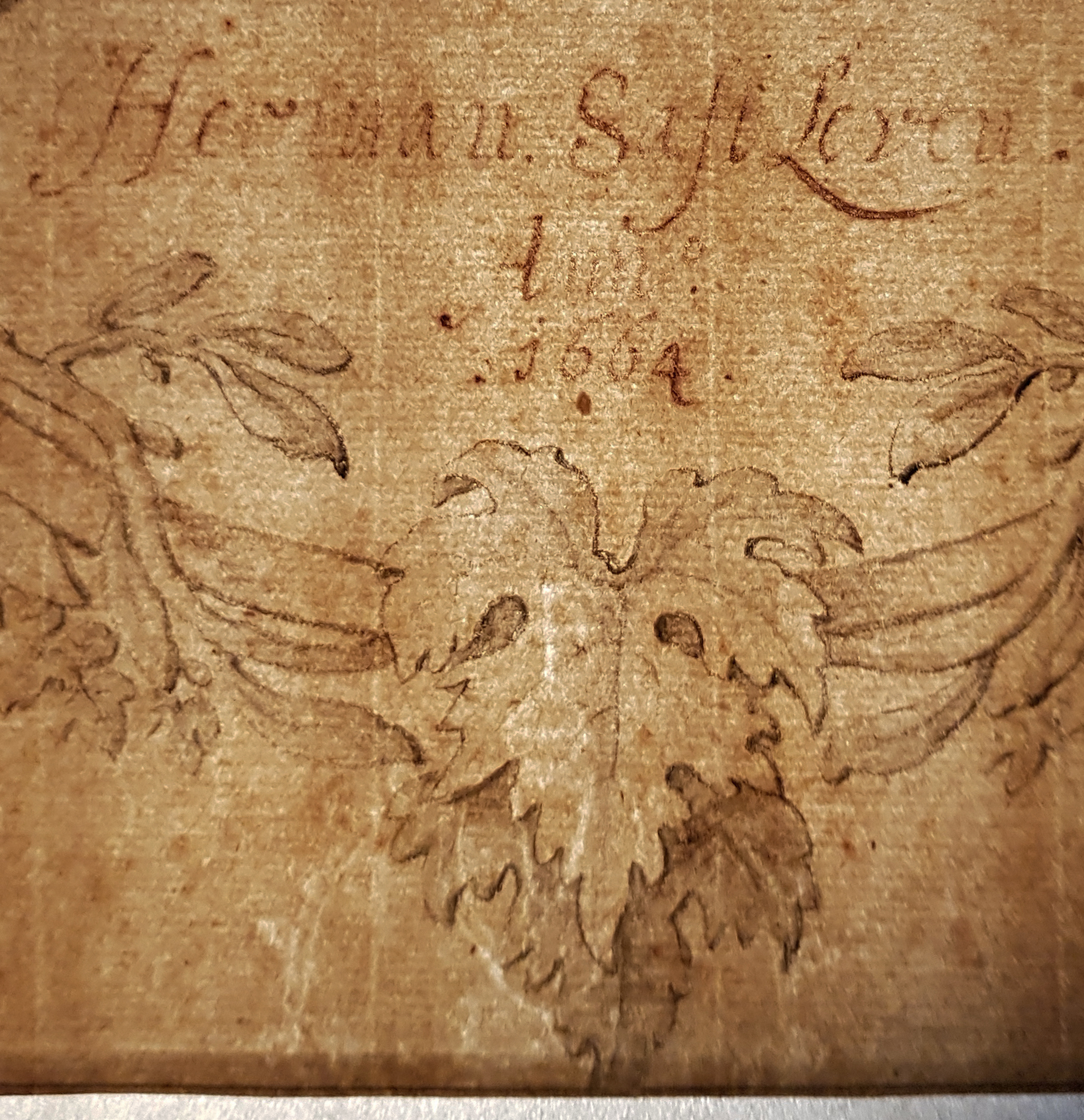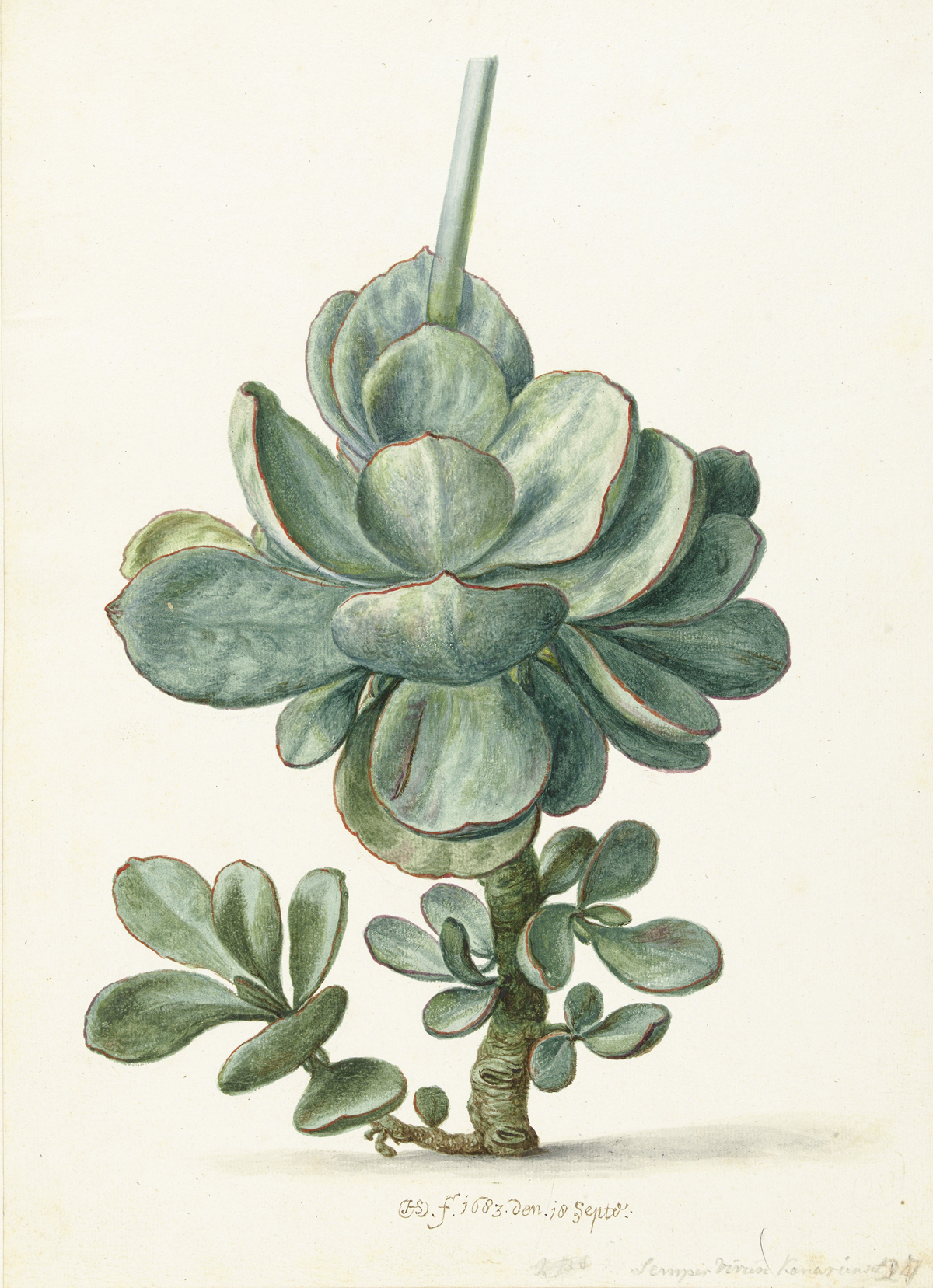HERMAN SAFTLEVEN (Rotterdam 1609 – 1685 Utrecht)
Herman Saftleven (Rotterdam 1609 – 1685 Utrecht)
Design for a decorative cartouche
Black chalk, pen and black ink, brown and grey wash, fragmentary watermark, dark grey framing lines, 129 x 164 mm (5.1 x 6.5 inch)
Signed and dated ‘Herman. SaftLeven. / Anno / . i664’ (brown ink)
Provenance
~ Anonymous sale, Sotheby Mak van Waay, 18 November 1980, lot 123
~ Lodewijk Houthakker (1926–2008), Amsterdam (Lugt 3893, lower right)
Literature
~ W. Schultz, Herman Saftleven 1609 – 1685. Leben und Werke, Berlin/New York 1982, p. 490, no. 1453, fig. 239
~ Jan Willem Salomonson, ‘“Op de wal agter St. Marye”: topografische aantekeningen bij een onbekend schilderijtje van Herman Saftleven’, Verhandelingen der Koninklijke Nederlandse Akademie van Wetenschappen, afd. Letterkunde, nieuwe reeks, 119, 1983, p. 52, note 53
~ P. Fuhring, Design into Art. Drawing for architecture and ornament. The Lodewijk Houthakker Collection, London 1989, vol. I, p. 145, no. 102, repr.
***
Herman Saftleven was born into a family of artists: his father, Herman the Elder (c.1580–1627) fathered three painter sons, Herman the Younger, Cornelis (1607–1681) and Abraham Saftleven (c.1611/13–c.1646), of whom Herman and Cornelis are considered the most talented.1 Around 1632, Herman established his studio in Utrecht, where he married Anna van Vliet the following year. He became an extraordinarily productive painter, draftsman and etcher. Among his patrons were Stadtholder Frederik Hendrik of Orange and the City Council of Utrecht, for whom he made a series of topographic drawings in 1647-48 and in 1669. Between 1655 and 1667 he held various administrative positions in the Utrecht guild of St Luke. His own daughter Sara Saftleven was a painter of flower still-lifes; she was presumably trained by her own father, by whom a number of flower drawings survives.2
In the early 1650s Saftleven travelled along the Rhine and Moselle rivers, which were to exert a lasting influence on his work. During his travels he drew a series of views of Rhine towns, from Arnhem and Cleves to Bingen, near Mainz. Once returned to his studio, he transformed these travel sketches into finished drawings and paintings. Many drawings of this sort are preserved as part of the Atlas Bleau, assembled by the Amsterdam lawyer Laurens van der Hem, and now in the National Library in Vienna. Saftleven frequently used these drawings for his oil paintings, which generally depict wide hilly river landscapes.
Saftleven was an extremely productive artist and a large corpus of his works survives. In addition to his landscape paintings, many drawings by the artist are known. They are mostly landscapes, but Saftleven also drew town views, flower still-lifes and studies of figures and boats. In contrast to his brother Cornelis, Herman only made a very small number of animal studies, a few exceptions being the study of a wild boar in the Städel Museum in Frankfurt am Main3 and a study of a man with two horses in the Rijksprentenkabinet.4
The present cartouche design is unique in Saftleven’s drawn oeuvre, the only pure ornament he ever produced. Consisting of leaves and branches twisting around an oval medallion, the central snail is a reference to the artist’s own surname, as Saft Leven can be translated as “soft life” or “slow life”, in reference to the physical character of the snail – this was already noted by Peter Führing in his catalogue of the drawings in the collection of Lodewijk Houthakker, who made a formidable collection of drawn designs, of which this sheet formed part.5 The original function of the sheet remains open to debate, but it would seem likely that it served as a frontispiece to a group of drawings by the artist, possibly landscapes produced during a journey in the year 1664. Saftleven's interest in the natural and botanic world is also evidenced by a group of watercolours he produced late in his career, including a study of a succulent plant in the Rijksprentenkabinet in Amsterdam (fig.).6
1. For the artist, see Wolfgang Schulz, Herman Saftleven 1609-1685: Leben und Werke, mit einem kritischen Katalog der Gemälde und Zeichnungen, Berlin 1982 and J. Nieuwstraten, ‘De ontwikkeling van Herman Saftlevens kunst tot 1650. Spiegel van stromingen in de Nederlandse landschapschilderkunst’, Nederlands Kunsthistorisch Jaarboek 16 (1965), pp. 81-117.
2. W. Schulz, ‘Blumenzeichnungen von Herman Saftleven d. J.’, Zeitschrift für Kunstgeschichte 40 (1977), pp. 135-153, esp. p. 136 and 149.
3. Black chalk, 111 x 170 mm, inv. no. 3013.
4. Black chalk, grey wash, 41 x 70 mm, inv. no. RP-T-1889-A-2093.
5. P. Fuhring, Design into Art. Drawing for architecture and ornament. The Lodewijk Houthakker Collection, London 1989, vol. I, p. 145, no. 102, repr.
6. Watercolour, 355 x 255 mm, signed with monogram HSL and dated 1683, inv. no. RP-T-1948-94.
